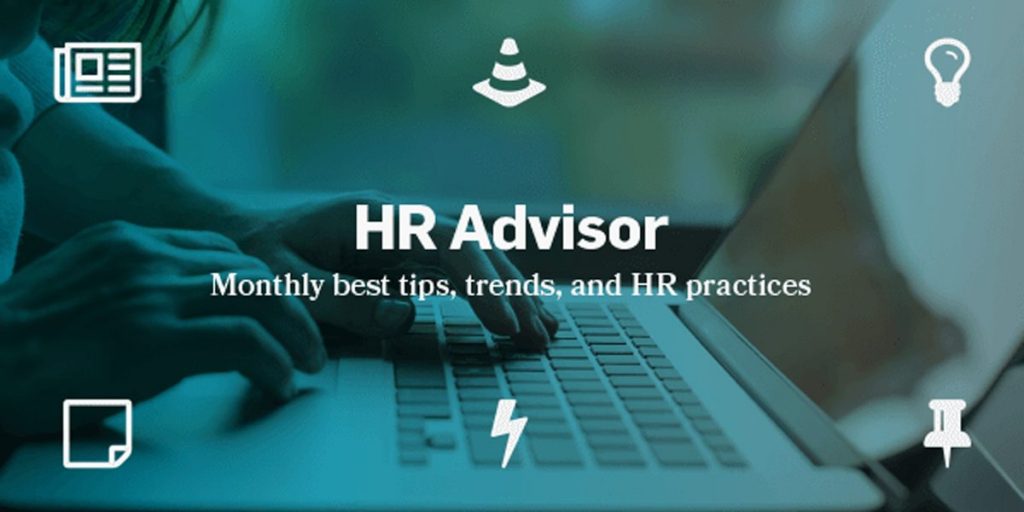Welcome to the July HR Advisor Newsletter. This month we provide guidance on increasing employee engagement, an explainer on the EEOC, and a tip about multi-tasking (hint: it’s not possible).
 Content Spotlight: Reverifying Form I-9s: a How-To
Content Spotlight: Reverifying Form I-9s: a How-To
All employees hired in the United States must fill out Form I-9 to prove they can legally work here. The United States Citizen and Immigration Services has provided a list of documents that establish an employee’s identity and employment authorization, either alone or when presented with other documents. Some of these forms expire and will need to be reverified. This guide has been created by our HR Pros with tips on the Form I-9 and what to do when an employee’s forms need to be reverified.
Want Your Organization to Stand Above the Crowd? Create an Engaging Workplace!
Most employees are not engaged at work—70% according to Gallup. This is no new trend. The combined number of unengaged and actively disengaged employees remains high from year to year. Poor engagement results in less productivity, less creativity, higher absenteeism, and higher turnover.
Employee engagement is basically a measure of your employees’ commitment to their work and the success of your organization. Think of it as their work ethic within your company. It includes their emotional investment in the work they do for you, but it’s not simply an emotional state. You might have employees who are grumpy and frustrated, yet strive to do their best work and make a difference.
Fortunately, low engagement isn’t inevitable. Some companies have great employee engagement. Their employees consciously and consistently work for the good of their organization. They’re committed, innovative, and driven to help their coworkers and organization thrive.
You can’t force an employee to be engaged—engagement is ultimately their choice. But you can create working conditions that inspire and empower employees to make that choice. What you want is an engaging culture—a workplace culture that prompts and rewards engagement. Here’s how you create it:
- Define the specific purpose of your organization. What do you do? What’s your style? How are you different from the competition? Employees can’t be engaged unless they have something to be engaged in. Engagement needs direction, focus. And employees need to know how their role contributes to the organization’s purpose.
- Commit to the success of your employees. If you want employees to work for your organization’s success, you must work for theirs. Coach them. Train them. Help them develop their skills and abilities. They’ll see that you care about their present and future success, and they’ll know that you trust them. And knowing you’re committed to them, they’ll be more committed to you.
- Recognize employees who go above and beyond. In a culture of engagement, just getting the job done isn’t enough. Encourage extra effort by rewarding it. Formal recognition programs are a great way to do this. And by recognizing employees for their efforts, you show them that their work is valued and meaningful.
- Encourage criticism, feedback, and innovation. Every organization could use improvement. Solicit your employees’ ideas. Be open to their suggestions. By giving your employees a say in the organization’s operations and working conditions, you provide them with a sense of ownership. Policies, procedures, and practices shouldn’t all be dictated from above.
- Allow for a healthy work-life balance. Your employees have other commitment they need to attend to. Give them the time to see to those commitments and have a life outside of work, and you’ll get more from them when they’re on the job.
 Did You Know?
Did You Know?
The Equal Employment Opportunity Commission (EEOC) has 53 field offices nationwide and often works in tandem with state civil rights departments to investigate claims. In 2016, the EEOC accepted more than 91,000 claims. Nearly half of those were related to sexual or other unlawful harassment. Discipline, termination, terms and conditions of employment, and reasonable accommodations were the other most commonly cited issues.
The EEOC was created by the Civil Rights Act of 1964, and was given the ability to sue on behalf of employees by the Equal Employment Opportunity Act of 1972. The Commission enforces Title VII of the Civil Rights Act, the Equal Pay Act (EPA), the Age Discrimination in Employment Act (ADEA), and the portions of the Americans with Disabilities Act (ADA) that apply to employment.
 HR Tip of the Month
HR Tip of the Month
Multitasking is a myth! Human brains simply cannot pay attention to two things at once. Instead, our focus operates like a flashlight, which can illuminate a thing over here or a thing over there, but not both at the same time. When we ask someone to multitask, they are just switching their focus back and forth between the two (or more) tasks. And the act of constantly switching focus makes a person worse at all of the tasks they are attempting to tackle. Task-switching can double the amount of time a task takes and usually more than double the number of mistakes that will be made. And over time, this constant task-switching hinders our ability to focus on a single task even when the other stimuli are removed.
Our tip? Whenever possible, structure your workday—and the workdays of your employees—so you can focus on one task at a time. For instance, only having your email program open for 10 minutes every hour, or 30 minutes in the morning and 30 in the afternoon, will eliminate the constant distraction (and refocusing of your flashlight) caused by desktop notifications and the temptation of replying instantly. Limiting access to social media, turning off notifications on your smartphone or desktop, and closing unnecessary windows are other simple ways to help you keep your focus where it belongs and maximize your productivity.
Contact Us
Anchor Payroll
PO Box 39
Chester, NJ 07930
Phone: 800-660-7089
Email: info@anchorpays.com



